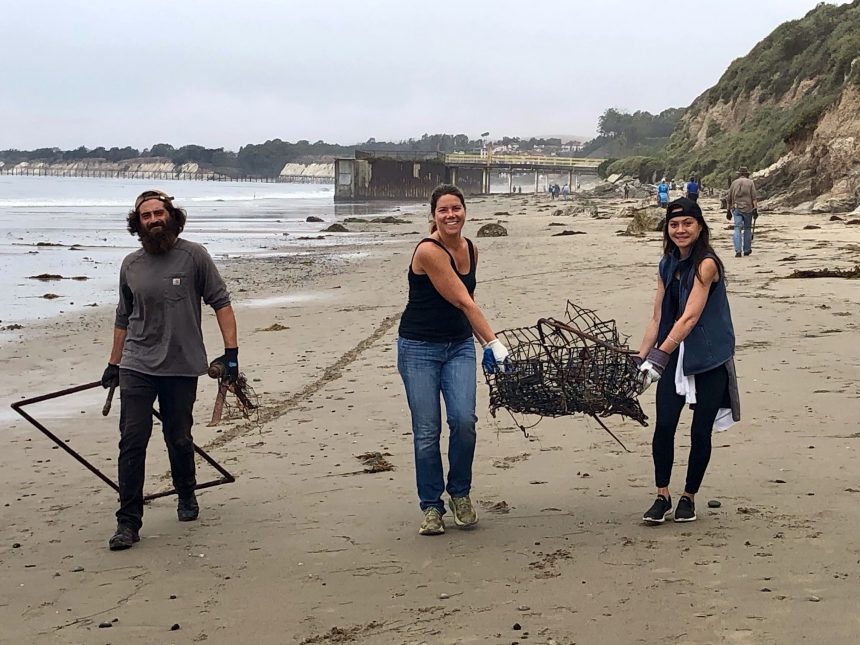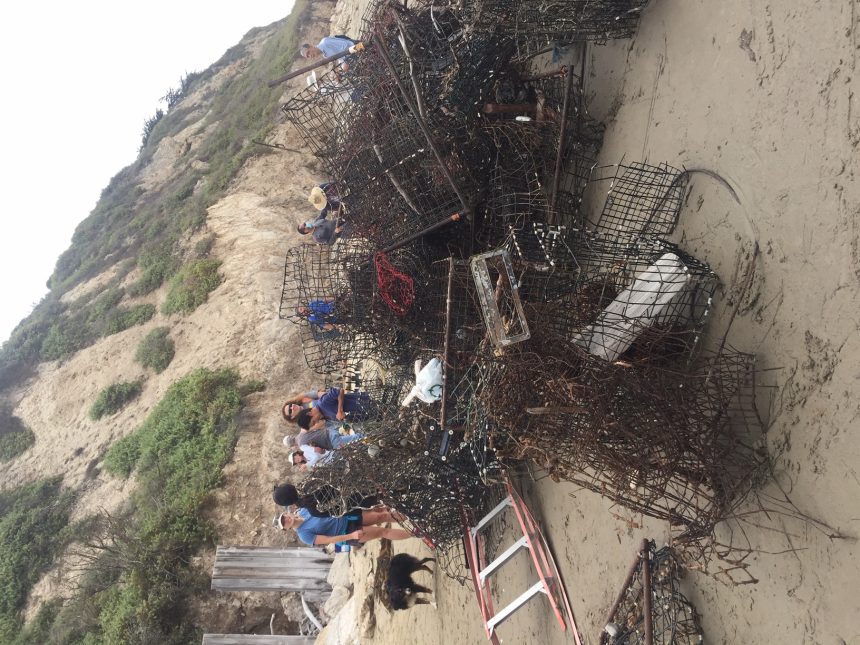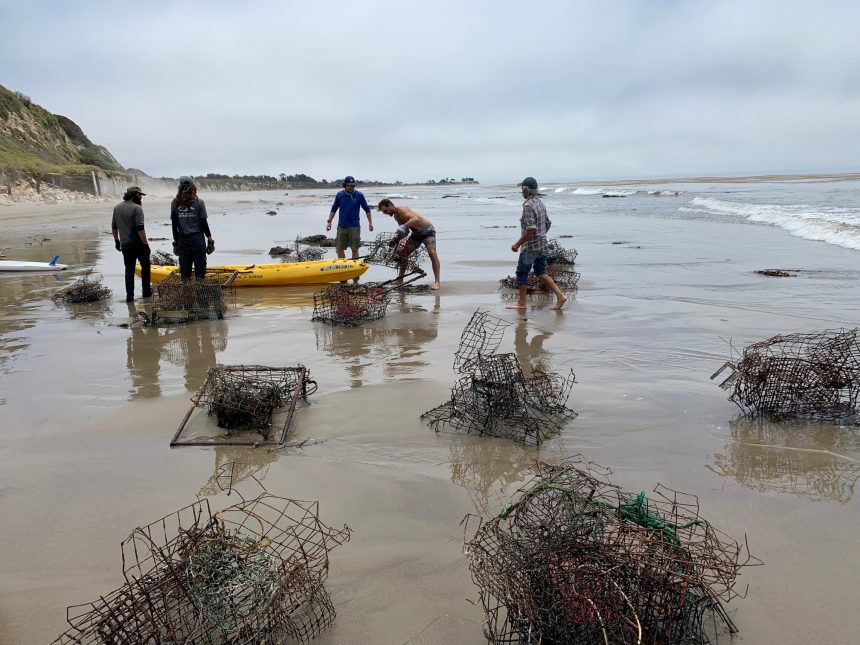Volunteers remove more than 40 deserted lobster traps from Goleta beaches to protect marine wildlife



GOLETA, Calif. - More than 35 volunteers with Santa Barbara Channelkeeper and members of the commercial fishing community worked at beaches across Goleta on Saturday to remove dozens of lobster traps that had been abandoned and left as a potential hazard to wildlife.
In May, Channelkeeper launched a Watershed Brigade initiative made up of volunteers who could clear marine debris from local beaches.
Last month, those volunteers searched the coast for derelict lobster traps and found 44 traps along the coastline. Channelkeeper reviewed the data and determined that the highest concentration of traps was located on the stretch of sand between Haskell’s and Ellwood Beaches in Goleta.
The volunteers set out to remove all of the traps on Saturday.
“Our Watershed Brigade was designed for exactly this kind of project,” said Ben Pitterle, Channelkeeper’s Interim Executive Director. “Our community is full of individuals who want to make a difference and help keep our beaches, creeks, and backcountry free of litter. By working together today, we were able to remove thousands of pounds of derelict fishing gear that would otherwise have persisted on this beach for years and years.”
Channelkeeper said the volunteers used shovels, wire cutters and pry bars to dig up buried traps and remove rocks and debris from them. The traps were then clipped onto a rope line and winched out from shore through the surf to the Bella B., a vessel owned by Santa Barbara fisherman Chris Voss.
Voss and the Harbor Commissioner Mike Nelson loaded the traps and transported them to the Santa Barbara Harbor so they could be disposed of properly.
According to Santa Barbara Channelkeeper, derelict lobster traps are a serious environmental problem globally and locally. Each winter, storms that bring heavy swells can dislodge the traps and sweep them into the ocean where they can continue to catch wildlife. As ghost traps drift, they can also entangle marine organisms, release microplastics, and pose safety hazards to both vessels and beachgoers. In the end, the abandoned traps wash up on local beaches as pollution.
The U.S. Department of Fish & Wildlife calls marine debris “one of the most pervasive threats to the health of the world’s coastal areas, oceans, and waterways,” and explains that “derelict fishing gear can injure or kill marine and coastal wildlife, damage and degrade habitats, interfere with navigational safety, cause economic loss to fishing and maritime industries, and threaten human health and safety.”
For more information about Santa Barbara Channelkeeper, visit www.sbck.org.
